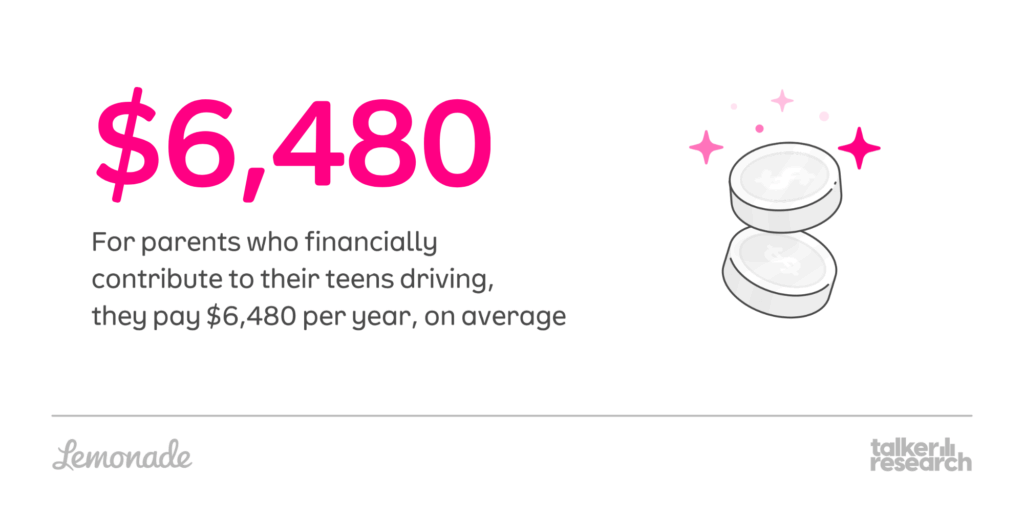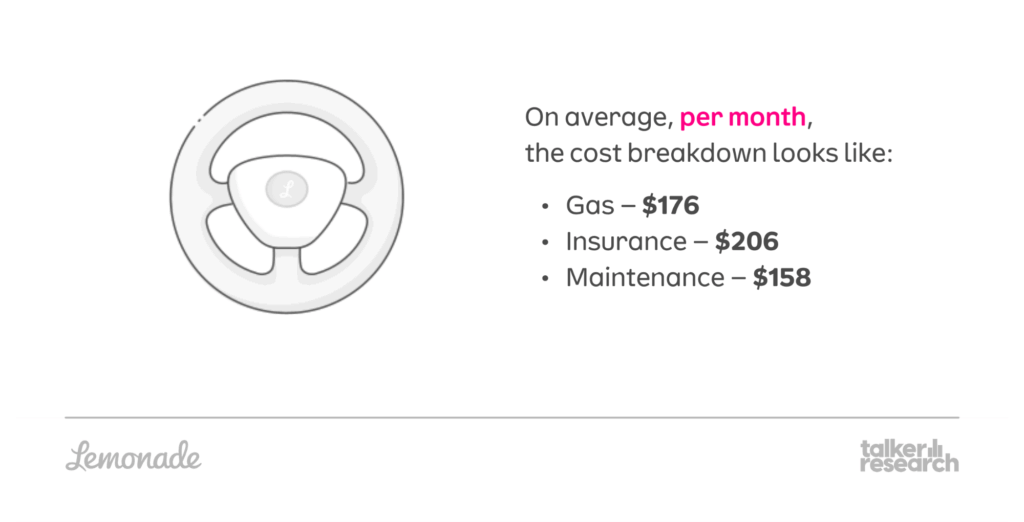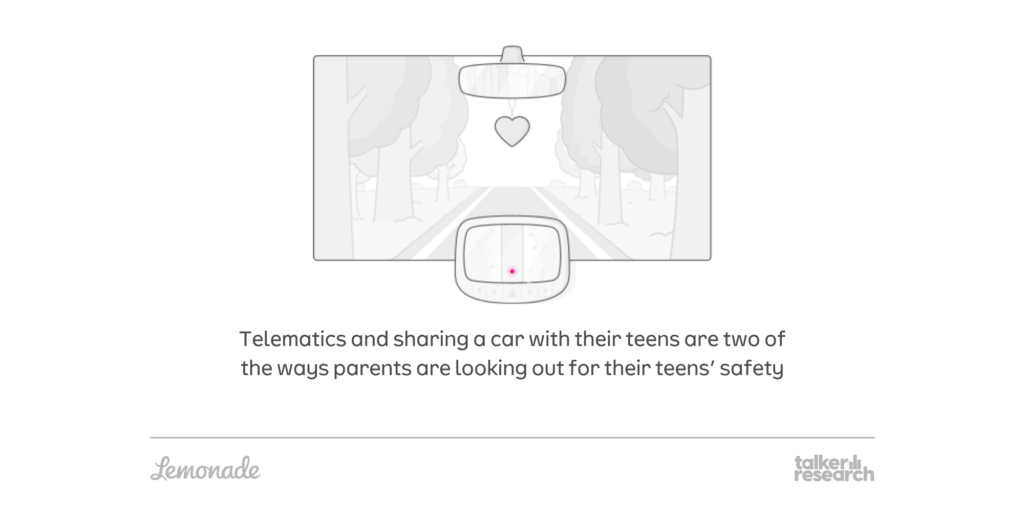The Great Parent-Teen Driving Wars: What Families Really Fight About
A new survey reveals the surprising battlegrounds (and unexpected solutions) in American households.

A new survey reveals the surprising battlegrounds (and unexpected solutions) in American households.

When it comes to family arguments, you might think dating, grades, or screen time top the list. Here’s where things get interesting: driving beats dating.
51% of parents argue with their teenagers about driving, making it the #2 source of family conflict, right behind chores (65%) but ahead of screen time (48%) and even dating (32%).
We’ve all been there. Unlike arguments about homework or cleaning their room, driving disagreements come with real stakes: safety, massive financial commitments, and that heart-stopping moment when you realize you’re about to hand over the keys to your most precious cargo.
If you’re in the thick of teaching your teen to drive, you’re definitely not alone in feeling like you’re losing your mind. We’ve all had those white-knuckle moments in the passenger seat, and the numbers prove it: parents average 4.2 disagreements per month about driving, rating their stress at introducing teens to driving as 6.5 out of 10 on average.
Here’s how driving conflicts stack up against other family friction points:
Now here’s where it gets really intense. Among families who argue about driving, 32% have 3-4 disagreements monthly, while 21% report 5-6 arguments. That means some families are facing driving-related battles almost every week, transforming what should be an exciting milestone into a source of constant tension.
“Be patient and communicate constantly—set clear rules, model safe driving, and make sure your teen understands that trust is earned, not assumed.”
To understand why these arguments feel so high-stakes, you need to see the numbers that keep parents awake at night. Here’s where things get really eye-opening: for parents who financially contribute to their teens’ driving, the annual cost averages a staggering $6,480.

We’re talking about more than many families spend on groceries, and it breaks down to $540 every month that has to come from somewhere in already-stretched budgets.
Here’s where every dollar actually goes:

Now the family battles suddenly make perfect sense. When we look at what parents and teens actually fight about, every single conflict connects back to this financial reality:
| What Parents and Teens Fight About | Percentage of Families |
|---|---|
| How fast they drive | 60% |
| How late they stay out | 52% |
| Gas usage | 50% |
| Not reporting whereabouts | 45% |
| Where they drive | 41% |
Speed tops the list because tickets mean insurance hikes on top of that $206 monthly premium. Gas fights affect half of families because every joy ride costs real money. The 45% arguing about location? They’re protecting a $30,000+ asset costing $540 monthly to operate.
Given these eye-watering costs, you might assume parents are primarily worried about their wallets. But here’s where our data reveals something profound about modern parenting priorities:

93% of parents said their child’s safety on the road is more important than the $6,480 annual expense. Only 6% prioritize cost concerns.
This safety-first mindset explains everything about modern parent behavior. We’ve all had those moments of panic when our teen is five minutes late and not answering their phone, which is why parents embrace monitoring technology and shared vehicles that provide peace of mind over their $6,480 annual investment.
Here’s where the story gets fascinating. Today’s conflicts happen in a completely different context:

When today’s parents were teens: 45% had their own cars, 35% bought them themselves
Today’s reality: Only 39% of teens have their own cars, just 14% bought them themselves, and 61% share with parents
This flip explains everything. When nearly half of parents owned cars as teens, location arguments didn’t exist. Today, when 61% share vehicles, every trip requires family negotiation over a $540 monthly investment.
Faced with constant arguments and massive costs, families found an unexpected solution. If you think teens rebel against monitoring, think again:

63% of parents embrace telematics monitoring, with 35% already using it and 28% wanting access.
The technology directly tackles the biggest argument sources:
“Set clear rules early, stick to them, and use a tracking app trust builds when they know you’re watching but not hovering.”
When we asked 1,444 parents for their #1 tip to make teen driving smoother, clear patterns emerged from the trenches. Here’s what works when you’re investing $6,480 annually and your sanity is on the line:

“Stay calm and patient—if you’re tense or snapping at every mistake, it just makes them more nervous. But if you keep your cool and give clear instructions, they’ll learn faster.”
“Just be patient with them and don’t yell, they are already nervous and scared.”
“Set clear rules early, stick to them, and use a tracking app. Trust builds when they know you’re watching but not hovering.”
“Start with trust, but back it up with structure. Set clear expectations early—like curfews, phone usage, and who pays for gas—and stick to them. Let your teen know driving is a privilege, not a right.”
“Life 360 is great. No night driving. No friends in the car until they are confident drivers.”
“Download a tracking app and install a safe driving app or device from insurance.”
The pattern is crystal clear: successful families combine patience with smart technology, trust-building with accountability. When you’re making a $6,480 investment, these systems protect both your financial commitment and your family relationships.
Here’s the most encouraging part: family dynamics actually improve over time. Despite the initial shock and monthly conflicts, 96% of parents actively work on teen safety and 83% became MORE safety-conscious after their teen started driving.
The transformation happens when families:
Today’s shared-vehicle reality actually creates more teaching opportunities than previous generations’ isolated learning.
The 4.2 monthly arguments and $6,480 investment don’t have to define your experience. Families using smart approaches like clear rules, patient teaching, and technology, transform stress into stronger relationships.
When you’re ready to protect your teen and your budget, choose insurance that rewards responsibility. Lemonade uses AI-powered telematics to track safe habits like smooth speed and low phone use, earning discounts for drivers of any age. With transparent pricing, no hidden fees, and technology that actually helps families build trust, we make teen driving less stressful and more affordable.
Talker Research surveyed 2,000 Americans who drive, and who are also parents to a teen driver; the survey was commissioned by Lemonade and administered and conducted online by Talker Research between Sept. 9 and Sept. 16, 2025.
A few quick words, because we <3 our lawyers: This post is general in nature, and any statement in it doesn’t alter the terms, conditions, exclusions, or limitations of policies issued by Lemonade, which differ according to your state of residence. You’re encouraged to discuss your specific circumstances with your own professional advisors. The purpose of this post is merely to provide you with info and insights you can use to make such discussions more productive! Naturally, all comments by, or references to, third parties represent their own views, and Lemonade assumes no responsibility for them. Coverage and discounts may not be available in all states.
Please note: Lemonade articles and other editorial content are meant for educational purposes only, and should not be relied upon instead of professional legal, insurance or financial advice. The content of these educational articles does not alter the terms, conditions, exclusions, or limitations of policies issued by Lemonade, which differ according to your state of residence. While we regularly review previously published content to ensure it is accurate and up-to-date, there may be instances in which legal conditions or policy details have changed since publication. Any hypothetical examples used in Lemonade editorial content are purely expositional. Hypothetical examples do not alter or bind Lemonade to any application of your insurance policy to the particular facts and circumstances of any actual claim.